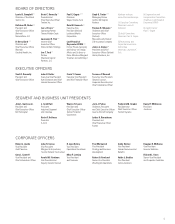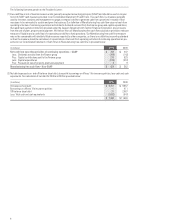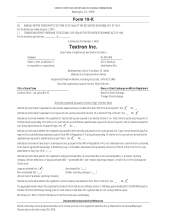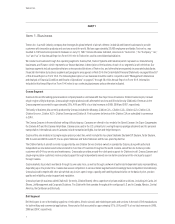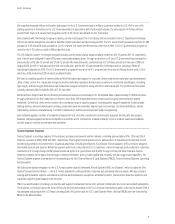E-Z-GO 2009 Annual Report Download - page 17
Download and view the complete annual report
Please find page 17 of the 2009 E-Z-GO annual report below. You can navigate through the pages in the report by either clicking on the pages listed below, or by using the keyword search tool below to find specific information within the annual report.
8
Item 1A. Risk Factors
capital, to merge with larger and stronger institutions and, in some cases, to fail. Many lenders and institutional investors have reduced and, in
some cases, ceased to provide funding to borrowers, including other financial institutions. This market turmoil and tightening of credit have led to
an increased level of commercial and consumer delinquencies and defaults, lack of consumer confidence, increased market volatility and
widespread reduction of business activity. Valuations of the types of collateral securing our captive finance portfolio, particularly valuations of
used aircraft, have decreased significantly and may continue to decrease if weak economic conditions continue. Declining collateral values could
result in greater delinquencies and foreclosures as customers elect to discontinue payments on loan balances that exceed asset values. Our
losses may increase if our collateral cannot be realized or is liquidated at prices not sufficient to recover the full amount of our finance receivable
portfolio. In particular, declining collateral values in the portion of our captive finance portfolio secured by non-Textron manufactured aircraft may
result in increased losses as we may have greater difficulty liquidating these assets. Further deterioration of our Finance segment’s ability to
successfully collect its finance receivable portfolio and to resolve problem accounts may adversely affect our cash flow, profitability and financial
condition. If these negative market conditions persist or worsen, we could experience continuing or increased adverse effects on our financial
condition and results of operations.
If our Finance segment’s estimates or assumptions used in determining the fair value of certain of its assets and its allowance
for losses on finance receivables prove to be incorrect, its cash flow, profitability, financial condition and business prospects
could be materially adversely affected.
Our Finance segment uses estimates and various assumptions in determining the fair value of certain of its assets, including finance receivables
held-for-sale that do not have active, quoted market prices. Our Finance segment also uses estimates and assumptions in determining its
allowance for losses on finance receivables and in determining the residual values of leased equipment and the value of repossessed assets and
properties. These estimates and assumptions are inherently difficult to make, and our Finance segment’s actual experience may differ materially
from these estimates and assumptions. A material difference between our Finance segment’s estimates and assumptions and its actual experience
may adversely affect our Finance segment’s cash flow, profitability and financial condition.
Payments required under our support agreement with Textron Financial Corporation could restrict our use of capital.
Under the terms of our support agreement with Textron Financial Corporation, during 2009, we made $270 million in cash payments to Textron
Financial Corporation to maintain both the fixed charge coverage ratio required by the support agreement and the leverage ratio required by
Textron Financial Corporation’s credit facility. These cash payments have been recorded as capital contributions to Textron Financial Corporation.
We will likely be required to make additional capital contributions to Textron Financial Corporation in the future in order to maintain these ratios.
While capital contributions to Textron Financial Corporation may not increase the aggregate amount of outstanding consolidated indebtedness of
Textron and Textron Financial Corporation, such contributions could restrict our allocation of available capital for other purposes. In addition,
recently, from time to time, Textron Financial Corporation has borrowed from us to meet its liquidity needs, and it may require further borrowings
from us for its liquidity needs in the future, depending upon market conditions. Textron Financial Corporation’s need for borrowings from us
could restrict our use of funds for other purposes.
Failure to maintain investment grade credit ratings acceptable to investors may increase the cost of our funding and may
adversely affect our access to the capital markets.
The major rating agencies regularly evaluate us, including Textron Financial Corporation. Late in 2008 and during 2009, our long- and short-term
credit ratings were subject to several downgrades resulting in the ratings disclosed on page 29 in the “Credit Ratings” section. Failure to maintain
investment grade credit ratings that are acceptable to investors may adversely affect the cost and other terms upon which we are able to obtain
financing, as well as our access to the capital markets.
We may need to obtain financing in order to meet our debt obligations in the future; such financing may not be available to us
on satisfactory terms, if at all.
We may periodically need to obtain financing in order to meet our debt obligations as they come due. This may include refinancing a portion of
our credit facilities prior to April 2012 when the approximate $3.0 billion in aggregate borrowings thereunder becomes due. Although we currently
believe we have access to the capital markets, due to the unstable economy and the volatile credit market environment, or other factors, we may
not be able to refinance our credit facilities or maturing debt at the time that such financing is necessary at terms that are acceptable to us, or at all.
If we cannot obtain adequate sources of credit on favorable terms, or at all, our business, operating results, and financial condition could be
adversely affected.
Our ability to fund our captive financing activities at economically competitive levels depends on our ability to borrow and
the cost of borrowing in the credit markets.
Our Finance segment’s ability to continue to offer customer financing for the products that we manufacture, and the long-term viability and


